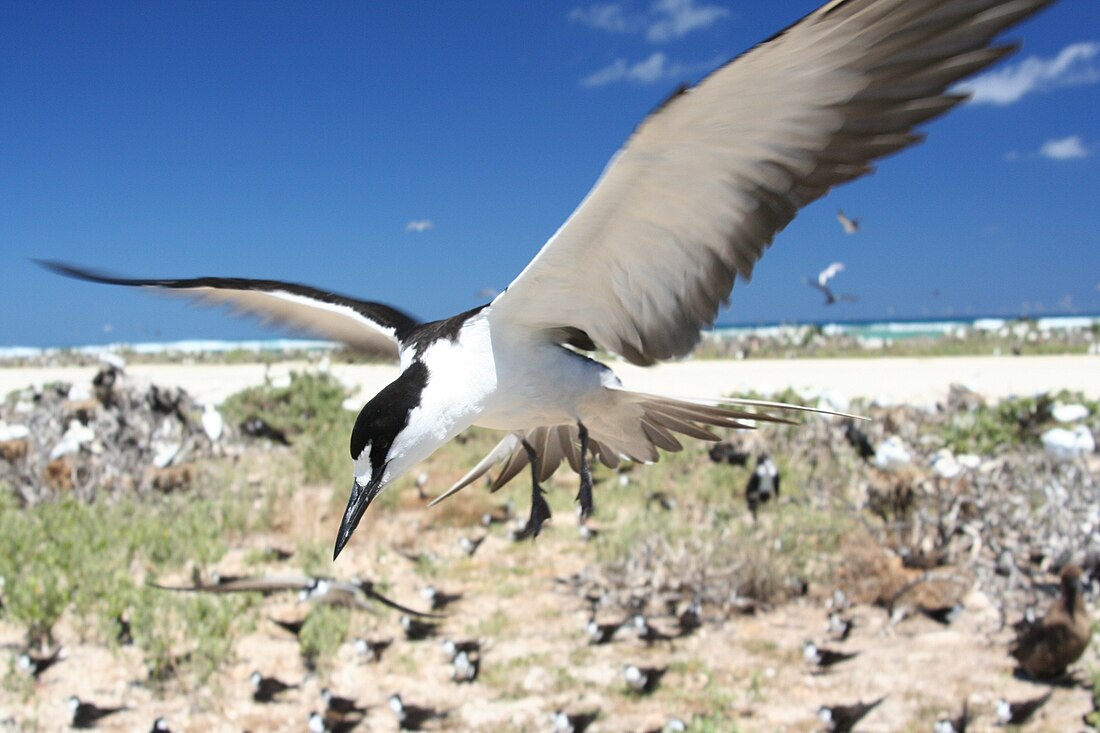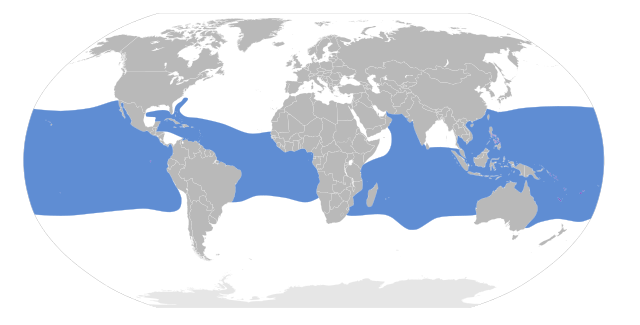Top Qs
Timeline
Chat
Perspective
Onychoprion
Genus of birds From Wikipedia, the free encyclopedia
Remove ads
Onychoprion is a genus of four species of terns in the family Laridae. The genus name is from Ancient Greek onux, "claw" or "nail", and prion, "saw".[2] As a group, they have been variously called "brown-winged terns"[3] or "brown-backed terns",[4] though only one species is actually brown; the other three are dark grey or black.
Remove ads
Species
Summarize
Perspective
Although the genus Onychoprion was first described in 1832 by Johann Georg Wagler, the species in the genus were generally retained within the larger genus Sterna, the genus that holds most terns, until a study in 2005 showed that this treatment was paraphyletic, with these four species less closely related to typical Sterna terns, than several other terns long treated in other genera like Chlidonias and Larosterna.[3]
Onychoprion diverged early from other terns about 16–18 million years ago, with only the very different noddies (Anous and Gygis) diverging earlier.[5] Within the genus, Aleutian tern is the most divergent, splitting off from the rest about ten million years ago; then sooty tern diverged about seven to eight million years ago, and finally bridled and spectacled terns diverged from each other about three million years ago.[5]
Three of the four species are tropical, and one has a sub-polar breeding range. The sooty tern has a pan-tropical distribution; the bridled tern also breeds across the Tropical Atlantic and Indian Ocean but in the central Pacific it is replaced by the spectacled tern. The Aleutian tern breeds around Alaska and Siberia but winters in the tropics around South East Asia.
Remove ads
Cultural aspects
Manutara is the Rapa Nui language name for spectacled and sooty terns. Both arrive at Easter Island and hatch their eggs on the island called Motu Nui, an event that was used for an annual rite called Tangata manu.
References
Wikiwand - on
Seamless Wikipedia browsing. On steroids.
Remove ads








